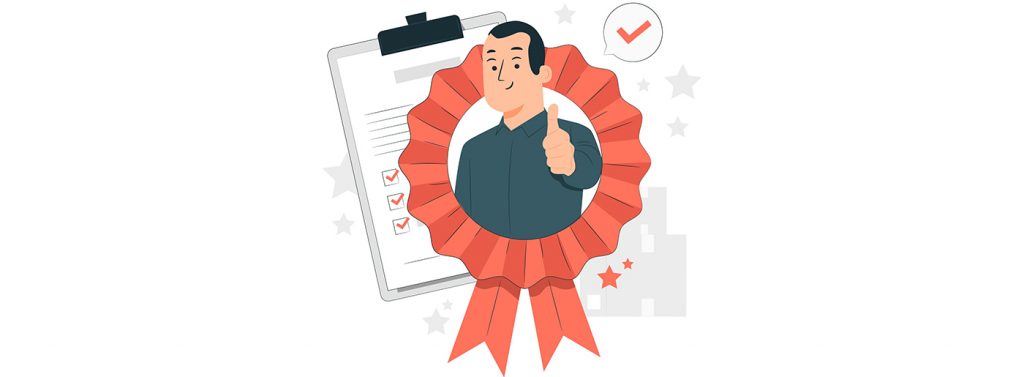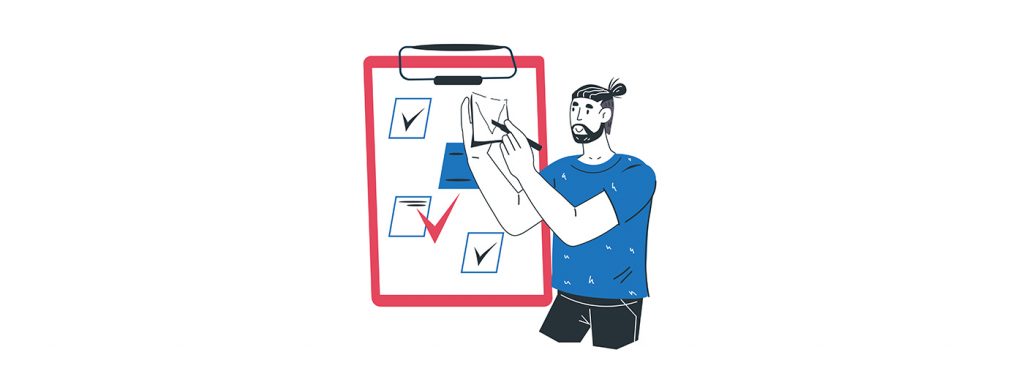9 Interview Approaches for UX Designers and How To Be Successful
You’ve already created the ideal resume and cover letter as a UX designer, and you’re invited to an interview. Cheers! The right time to start prepping starts now. Your nerves may begin to take hold but resist letting them control you. Interviews count as a dreaded but necessary aspect of changing or upgrading professions. However, they may be terrifying if you’re commencing in a completely new industry, regardless of whether you have a past background in the field or are a veteran player. The standard “golden rules”— punctuality, a solid handshake, or good eye contact- apply while preparing for your UX design appointment. Beyond these fundamentals, employers also search for specific attributes, so prepare appropriately.
9 Smart Strategies to Ace that UX Designer Interview Successfully
This post will outline what to anticipate from job interviews for UX designers. Be it your debut encounter, or you’re an experienced UX designer seeking to switch firms, we’ll provide essential advice and tips to help you enter the interview room — feeling confident, calm, and poised to impress.
Be Well-Prepared
Research as thoroughly as possible before the appointment, as this is the most crucial thing to do. There’s a ton of UX-related information online, including helpful interview questions and the best replies. Pick a few websites that offer the necessary materials and are suitable to follow — to adequately prepare so that the wealth of information won’t overwhelm you. Attempt to relate the responses to your knowledge and real-world experiences as you read and understand the answers provided.
Collect a sizable pool of possible interview questions or use the STAR method to prepare properly. Compile them into a booklet by recording all the inquiries and responses. Then, modify the responses by including your personal experience with everyone. Add the queries and responses to the same page to make it your interview’s vocabulary. To help you, let’s check out a few typical interview questions for UX designers and discuss what they mean.
Common UX Designer Interview Questions and Their Answers
Describe Yourself to Me
The above query or something similar is a standard inclusion in almost all UX designer interview questions. Although it seems ambiguous enough, it isn’t a request for your autobiography. It’s a request for you to share your UX design narrative. The employer will be interested in learning how you wound up choosing this career trajectory, particularly if you’re looking for your first role in design. What prompted you to pursue UX design? How do you become an excellent UX designer?
Tell a coherent, pertinent tale that begins when your love for design processes was born and ends with the position you are applying for. For instance, if you worked in customer support before transitioning to UX, discuss how this helped you develop your ability to empathize and establish a user-centric mindset. Similar to your design resume, you don’t need to cover every single of your life’s experiences to date; instead, concentrate on the details that best demonstrate your qualification for the position. If you are applying for a position in a restaurant, apart from these questions, have a look at the interview questions for restaurants to have some knowledge about that sphere too.
Describe Your Areas of Strength
This represents the interviewer’s query, “Are you qualified for this position?” Determine your three greatest strengths, most relevant to the role, before the appointment. Demonstrate that you’ve got the necessary expertise and that you’re also aware of how crucial these abilities are for the position. Review the job requirements once more. Which responsibilities of the position give you the highest confidence? Perhaps you have a reputation as a genius at fixing issues or a talent for uniting people and improving teamwork.
Give concrete instances, if you can, to back up your assertions. This strengthens your argument and simplifies the process for the hiring manager to envision you in that role.
What Are Some of the Growth Areas You Identified for Yourself?
This question might be tricky when marketing yourself to a prospective employer. Avoid cliché responses, even though they seem a little conventional on the outside! Claiming that you strive to overachieve or for perfectionism won’t help you look good in front of the hiring manager.
How Can You Improve from Your Failures? Is the True Query Here?
Communicate your work to others and remain open to ongoing criticism if you want to succeed as a UX designer. It’s crucial to show during the conversation that you can accept responsibility for mistakes, correct them, and push ahead.
Consider a period in your life, particularly at work, when things didn’t exactly go as planned as you consider your response to this inquiry. What else could you’ve done? Where did you apply this learning to change your behavior the following time a circumstance such as this one arose? Although honesty is essential, try to stay away from discussing job-specific skills. Concentrate primarily on more abstract instances, which could jeopardize your likelihood of being hired immediately.
2. Research the Company
Visit the organization’s website, LinkedIn, or Glassdoor pages to find information about the company you’re applying for. Checking to discover if the business has lately been mentioned in the media can be helpful and educational. Additionally, if feasible, investigate the panelists and product owners. Look up their educational background and previous employment locations. You may know a few people in common.
To understand the role you’re applying for, read the job posting several times. After completing this activity, you’ll understand the traits and competencies any company is looking for. Then, during the interview, discuss how you’ve shown these competencies before and how you’ll pick them up if employed.
3. Examine Your Portfolio

Examining the job requirements in detail can help you determine whether refreshing your UX profile is necessary. Ensure your portfolio and resume list any talents specified in the job role. If you’re asked to lead the interviewers through your CV, describe it to them. Be capable of:
- Describing your latest projects and related experience.
- Proving to the firm that you’re able to provide value.
- Emphasizing your unique accomplishments and best qualities.
4. Brush up on Your Soft Skills Before the Interview
Ensure your soft skills remain up to standard whether you’re seeking a junior or senior UX design role. Excellent interpersonal and communication skills are crucial for managers to manage their teams effectively. As an option, a novice designer must be a great team player and listener. Therefore, revise your CV immediately if it lacks soft abilities. When applying for jobs, strengthen these abilities by using them daily. If you want to sharpen your technical skills, consider enrolling in a UX design Bootcamp.
5. Have Instances of Both Positive and Negative User Experiences
UX design aims to develop products that provide end users with meaningful and worthwhile experiences. It might also go the other way since it’s a procedure. Be ready to give concrete examples to support your ideas when discussing UX design roadmap. Following UX design journals, blogs, or other publications is beneficial. Provide both successful and unsuccessful UX illustrations from your previous employer.
6. Examine the Firm’s Products and Website Beforehand
Review the products or websites in question before discussing if working on them is required for the position, and prepare a list of areas where you can enhance it. LinkedIn is another tool you can use to interact with designers who could already be involved in that project. If you do this, you’ll understand the firm’s expectations of you during the application process.
7. Clearly Describe Your Ideas, Thoughts, and Creative Process
You might be requested to discuss your opinions and views on particular UI UX design services and procedures, such as how to develop a customer persona. For example, if you wish to simplify a conceptual design, explain your ideas in terms that a layperson can comprehend. Additionally, reading frequently about UX design can make it easier for you to express your thoughts confidently.
8. Prepare a Questionnaire for the Interviewers Before the Interview

After the meeting, The interviewer might ask whether you’ve any final questions about the position or business. Create a concise list of questions in advance to show that you’re interested. Ensure your inquiries show your enthusiasm for the job and the organization and are related to the employment post.
9. Consider Your Ideal Salary Range in Advance
You can be questioned about your wage expectations during a design interview. Preparing an answer in advance is the right strategy to respond with assurance. Find out how much designers in that position often make by researching. Explore it on platforms like Glassdoor and LinkedIn. If your first job as a UX designer, research salaries in the field to compare them to yours. No matter your level of seniority, be ready to defend your right to the pay you desire. To demonstrate that you’re worthy of the sum you’re requesting, include any UX certificate programs, courses or workshops you’ve attended.
Be Prepared for Your UX Design with Confidence!
Achieving your career objectives requires investing time in interview preparation for UX design positions or any other. Start by anticipating the queries you’ll be asked, going over your responses, and developing your inquiries. Be sure to check your profile to know the specific examples to use and topics to cover to demonstrate your abilities. Finally, maintain professionalism and punctuality. With these pointers, you can be confident that you’ll be ready for your following significant position as a successful UX designer.




Leave a Reply